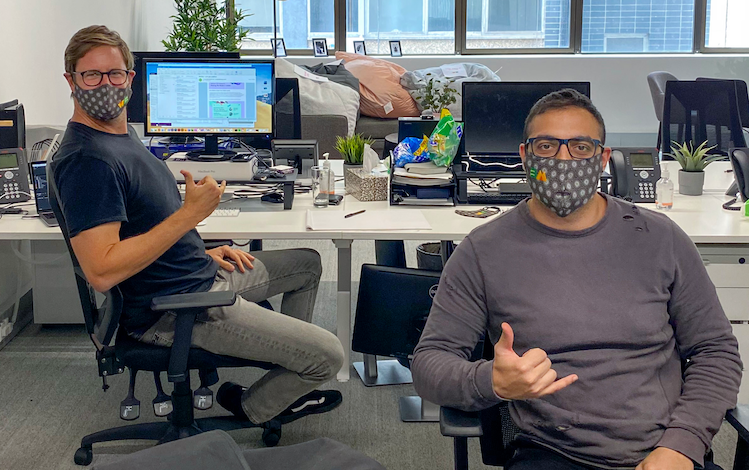My challenge to communicators is to find a new way of talking about this. Composite, combination, blend, fusion — I don’t know, but we need something. The trick will be messaging these return-to-office plans in a way that doesn’t sound like a halfway compromise and gets people excited — because if your company is doing it right, it should be exciting. We’re looking at combining the best of the office — culture, collaboration, a centralized environment — with the best of working from home — flexibility, safety, comfort. If return-to-office is the business problem everybody needs to solve in 2021, then bringing audiences along is the challenge for communicators.


Revisiting 2021's Brand Storytelling Trends
In January, I published a blog, “4 Trends Changing Brand Storytelling in 2021.” We’re halfway through the year now, and the world has changed much faster and in much more complex ways than we could have imagined back in January. Now’s a good time to revisit what we thought the year would look like, build on what was right, and take stock of what wasn’t.
In January, I identified four brand storytelling trends:
- Using data and analytics to get creative with audience insights
- Understanding how security is changing
- Embracing our globally connected world
- Rethinking physical offices and employee engagement
“Using data and analytics to get creative with audience insights” is an ongoing concern — we’ve been talking about data and analytics driving audience insights forever, and are likely to keep talking it. The takeaway is that few people are doing it well. “Understanding how security is changing” feels similar at the beginning of H2 as it did in January, although our recent research, “What’s Next: Technology, Communications and the Race to Recovery,” indicates that 64% of Americans say the pandemic has made them more worried about privacy and cybercrime.
I want to dive deeper on two of the trends that have become particularly relevant in H2: “embracing our globally connected world” and “rethinking physical offices and employee engagement,” both of which speak to the biggest issue in communications and business right now: hybridity.
When IRL and Virtual are the Same
Back in January, I talked about how brands can take advantage of the globally connected world: “Given that most of us aren’t traveling or having many in-person experiences, brands have online audiences yearning to be captivated. Having the right tools in place to create digital and interactive experiences is the best way to express your brand.”
At the end of June, we find ourselves halfway between meeting online and meeting in real life (IRL). Many brands are struggling to plan and execute activations that work for online audiences as well as customers lucky enough to experience them in person. At WE, we recently participated in Cannes Condensed, in partnership with PRovoke and ICCO, an event filmed in front of a small in-studio audience and streamed live for global viewers. We loved it, because we had the opportunity for direct engagement with a limited audience of industry peers, and we had the reach of a virtual event or webinar.
I think the second half of 2021, and beyond, will be defined by this question: How do we get the benefits of in person AND the reach and flexibility of virtual?
Office-Centric or People-Centric
The return to work has proved much more fraught and complicated than anyone could have guessed. Just look at Microsoft’s complex multichannel communication blitz around its hybrid work solution and products, or the blowback against Morgan Stanley CEO James Gorman’s comment earlier this month that, “By Labor Day, I’ll be very disappointed if people haven’t found their way into the office and then we’ll have a different kind of conversation... If you can go to a restaurant in New York City, you can come into the office.”
In our own industry, Omnicom CEO John Wren’s comment that Omnicom’s agencies would be returning to an “office-centric culture” actually informed how WE thought about its return-to-work plan. We’re thinking not “office-centric” but “people-centric,” finding ways to do our work in the most efficient, safest and healthiest way possible.
We Need a New Word for "Hybrid"
All these hybrid events and hybrid work solutions and we still don’t have a better way of describing them than “hybrid.” Hybrid is becoming one of those business words that means nothing, and the associations it carries are bland at best. “Hybrid” is a Prius. “Hybrid” is genetically modified corn. “Hybrid” is the uninspiring compromise, not the best of both worlds, but the most so-so of each.
The latest blogs from WE
MNCs in China Must Prioritize Internal Communications
To Tell Your ESG Story, Think Digital
5 Ways Tech Will Reshape Culture in 2024


